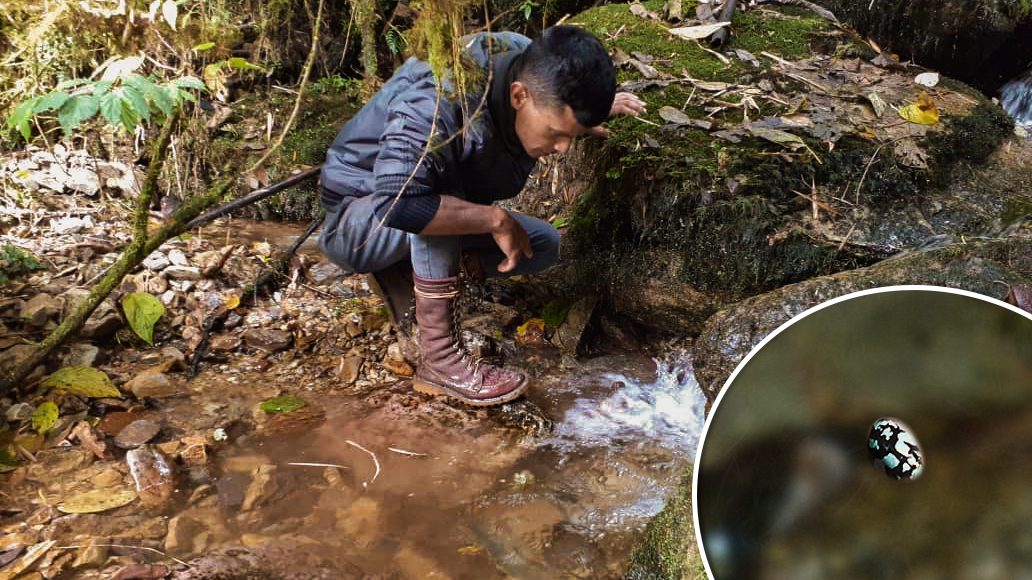By Enrique La Marca and Marcos Alexander Hidalgo. Rescue of Endangered Venezuelan Amphibians (REVA) Conservation and Guaramacal Andean Bear Project.
There is news that is made to wait but when it comes out it does not stop causing a sensation. This is the case of a species of Harlequin Frog that has not yet received a formal scientific name but, thanks to the support of the Atelopus Survival Intiative (ASI), will soon be known. The species in question is a cloud forest inhabitant of one of the northernmost mountain ranges in the Andes of Venezuela, the southern axis of the Sierra de Trujillo. Discovered in the mountain branch (Ramal) of Guaramacal at the end of the eighties in the last century, the frog was not seen again, although sporadic reports indicated the existence of tadpoles of the same.
Thanks to the support of Global Wildlife Conservation, through the Amphibian Survival Alliance, we established a program to search for populations of the still unnamed species, which currently involves the management of the REVA Conservation Center in conjunction with a regional Conservation and Study organization that monitors populations of the Andean Bear (Tremarctos ornatus), together with the support of personnel from the National Parks Institute (INPARQUES) in charge of the General Cruz Carrillo National Park in Guaramacal.
As a result of this alliance between REVA and the Guaramacal Andean Bear Project (Proyecto Oso Andino Guaramacal) in January 2021 we detected a new population of the species in the process of description, in the form of seven free-living tadpoles belonging to the genus Atelopus and that we associate with the new species. This is great news, not only for the fact that that the species is still present in the region, but also for the indirect evidence that there are adult specimens that are reproducing. This is the first and only Venezuelan Andean Harlequin Frog species to appear in several decades and the second Venezuelan species to show stable populations in Venezuela (the other being Atelopus cruciger, which lives in coastal environments to the north of the country).
The recent finding is of particular interest, not only because it accelerates the process of describing the new species, but also because it represents a hope for future survival of an amphibian whose other regional representatives in the genus have suffered serious population declines and extinctions. In the meantime, we have already started monitoring these larvae and hope to find some adults.

